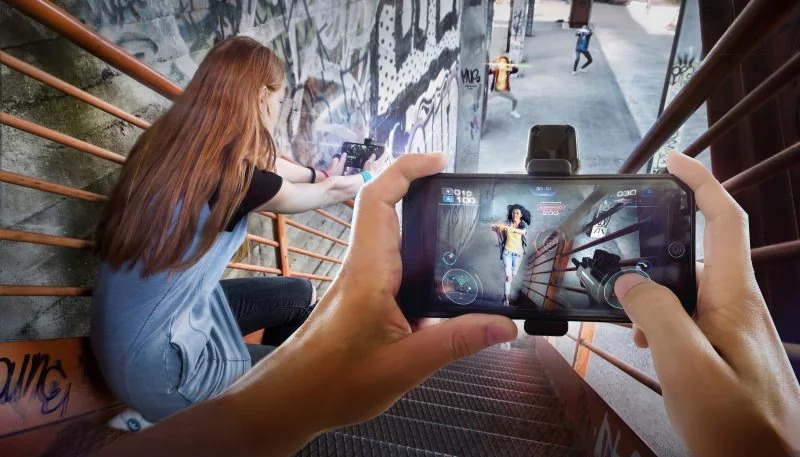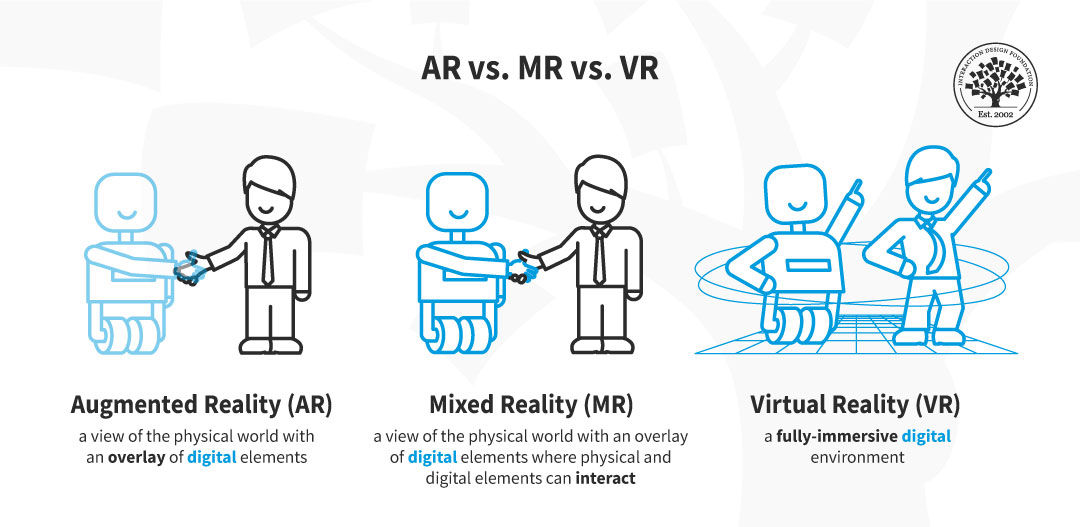
Augmented Reality: A Brief Overview
Definition of Augmented Reality
Augmented Reality (AR) has emerged as a groundbreaking technology that superimposes digital content—such as images, sounds, or information—onto the real world. Essentially, it enhances our perception of reality, allowing interaction with both the physical and digital realms simultaneously. Unlike Virtual Reality (VR), which immerses users entirely in a digital environment, AR blends the two worlds, providing an enriched experience. Imagine walking through your neighborhood and seeing historical data about buildings projected on your smartphone; that’s a prime example of AR in action!
History of Augmented Reality
The journey of augmented reality is quite fascinating! The concept dates back to the 1960s when Ivan Sutherland developed the first head-mounted display, which was a rudimentary glimpse of AR. However, the term “augmented reality” wasn’t coined until 1990 by Tom Caudell, who worked at Boeing.
Here’s a brief timeline of significant milestones in AR history:
- 1968: Ivan Sutherland creates the first head-mounted display for AR.
- 1990: The term “augmented reality” is introduced by Tom Caudell.
- 1999: The ARToolKit, a groundbreaking open-source software, is developed by Hirokazu Kato, enabling digital content overlay.
- 2016: The launch of Pokémon GO propels AR into the mainstream, captivating millions worldwide and showcasing its gaming potential.
Types of Augmented Reality Technology
AR technology can be categorized into three main types, each leveraging different methods to enhance the user experience:
- Marker-Based AR: Utilizes a camera and a visual marker (like QR codes) to overlay digital content. An example is scanning a code to see a 3D model appear on your tablet.
- Markerless AR: No markers are needed. This type uses GPS, compass, and accelerometer data to identify location. Google Maps’ Live View is a great illustration.
- Projection-Based AR: Involves projecting light onto surfaces, allowing interaction. Think of a light show that interacts with viewers!
Overall, understanding the foundation of AR sets the stage for exploring its profound impact on various sectors, especially gaming. As we move forward, the next sections will delve into how augmented reality is revolutionizing how we play and connect with others.

The Impact of Augmented Reality on Gaming
Evolution of AR in the Gaming Industry
The gaming industry has undergone a significant transformation since the introduction of augmented reality. Initially, AR was a niche concept limited to experimental applications. However, as technology advanced, developers began to embrace its potential. The pivotal moment can be traced back to 2016 when Pokémon GO took the world by storm. Suddenly, players were not just confined to a screen; they could explore their neighborhoods while catching Pokémon in real life!
This launch spurred a wave of AR game development, leading to an explosion of innovative titles and technologies. It’s exciting to think about how far we’ve come in just a few years!
Benefits of AR Gaming Experiences
AR gaming offers numerous advantages that enhance gameplay and user engagement. Here are some notable benefits:
- Immersive Interaction: Players can interact with virtual elements in their real-world environment, enhancing realism and excitement.
- Physical Activity: Games like Pokémon GO encourage players to walk, run, and explore, promoting a healthier lifestyle.
- Social Connectivity: AR games often involve multiplayer experiences, fostering social interactions and teamwork, whether with friends or strangers.
- Enhanced Learning: Many AR games incorporate educational content, making learning fun and interactive. For example, players can learn about astronomy while exploring the night sky.
Popular AR Games and Applications
Several AR games have captured the hearts of players around the globe. Some of the most popular include:
- Pokémon GO: The trailblazer of AR gaming, which took over the world with its engaging gameplay.
- Harry Potter: Wizards Unite: This game allows players to explore the wizarding world, battling magical creatures in real-time environments.
- Ingress: The precursor to Pokémon GO, Ingress invites players to capture territories and portals, encouraging community interaction.
These games represent just a fraction of the potential AR holds for gaming. As technology continues to evolve, so will AR experiences, keeping players on their toes and transforming how augmented reality is changing the way we play!

How Augmented Reality Enhances Traditional Gaming
Integration of AR Features in Traditional Games
As augmented reality technology continues to evolve, its seamless integration into traditional games is breathing new life into familiar formats. Many classic games have added AR elements to create a hybrid experience that captures the charm of traditional gameplay while introducing dynamic new twists.
For instance, take board games like Monopoly or Settlers of Catan. With AR features, players can see animated avatars or properties pop up when they look through their smartphones or AR glasses, adding an engaging layer to gameplay. Imagine rolling the dice and watching as 3D characters move around the game board!
The integration of AR doesn’t stop there; AR is also influencing other game genres, including:
- Card Games: Games like Magic: The Gathering are enhancing gameplay with AR, allowing players to see their cards come to life when viewed through a device.
- Role-Playing Games (RPGs): Titles like Dungeons & Dragons use AR to create immersive environments that enhance storytelling and character interaction.
Immersive Gameplay Experiences with AR
The beauty of AR lies in its ability to create immersive gameplay experiences that pull players deeper into the game’s narrative. When players can interact with a game world that merges the physical and digital, immersion reaches new heights.
For example, imagine the thrill of a horror game where digital creatures can appear right in your living room, making you jump from your seat! With AR technology, players aren’t just passive observers; they become integral parts of the story, physically moving and reacting to various scenarios around them.
Additionally, AR enhances real-time strategy games by allowing players to visualize units and landscapes in their actual surroundings. This level of engagement promotes a deeper connection with the game, making victories even more satisfying!
Augmented Reality Accessories and Devices
To further amplify the AR gaming experience, a variety of specialized accessories and devices are now available. Some notable examples include:
- Smart Glasses: Devices like the Microsoft HoloLens project holographic images in the player’s field of vision, transforming the way they interact with games.
- AR-enabled Consoles: Game consoles like the PlayStation 5 are exploring AR capabilities, offering games designed specifically for augmented experiences.
- Mobile Integration: Most smartphones are equipped with AR capabilities, handing gamers a powerful tool for interactive play without needing extra gadgets.
As these technologies become more advanced, the line between traditional and augmented gaming continues to blur, creating unique and captivating experiences. The future is undoubtedly bright for AR, continually changing how we perceive and engage with gaming in our everyday lives!

The Future of Augmented Reality Gaming
Advancements in AR Technology
As we look ahead, the future of augmented reality gaming is brimming with exciting advancements that promise to revolutionize how we interact with digital content. Cutting-edge technology is constantly emerging, making AR experiences more realistic and engaging.
Here are some key advancements to keep an eye on:
- Improved Hardware: Next-generation AR glasses and headsets are in development, which will offer better field of view, resolution, and comfort. Imagine gaming for hours without the discomfort of bulky equipment!
- AI Integration: Artificial intelligence is set to enhance AR interactions by delivering personalized gaming experiences that adapt based on player behavior and preferences. This means your gaming experience could feel uniquely tailored to you!
- 5G Connectivity: With the rollout of 5G networks, seamless connectivity will allow for more intricate multiplayer AR games. Real-time interactions with other players will become even smoother, making gaming less frustrating and more enjoyable.
Potential Challenges and Limitations
While the future looks bright for AR gaming, there are several challenges and limitations to consider.
- Hardware Costs: Advanced AR devices can be expensive, making them inaccessible for many potential players. Affordability will be crucial for widespread adoption.
- User Experience: Some players may find the technology overwhelming, especially if they encounter issues like motion sickness when immersed in AR environments.
- Privacy Concerns: With AR games often using cameras and GPS, there’s an ongoing discussion about user privacy and data security. Players want to enjoy immersive experiences without feeling their privacy is compromised.
Predictions for the Future of AR Gaming
Looking ahead, predictions regarding the future of AR gaming are incredibly optimistic:
- Mainstream Adoption: As technologies become more affordable and user-friendly, it’s likely we will see AR gaming enter the mainstream, just like mobile gaming did a decade ago.
- Cross-Platform Experiences: Future AR games are expected to feature cross-platform play, allowing users to interact regardless of their devices—whether on a smartphone or a dedicated AR headset.
- Expansion Beyond Gaming: Beyond traditional gaming, AR’s potential will extend to education, fitness, and social interactions, making it an all-encompassing part of our digital lives.
In summary, the future of augmented reality gaming is filled with potential. As advancements continue and challenges are addressed, players can look forward to richer, more immersive experiences that redefine how augmented reality is changing the way we play!

Augmented Reality and Social Interaction
Multiplayer AR Gaming
One of the most exciting aspects of augmented reality is its ability to foster social interaction through multiplayer gaming. Unlike traditional games that often isolate players behind screens, AR games invite people into a shared, real-world environment. Imagine gathering your friends for a round of Pokémon GO and transforming your neighborhood into a battlefield for friendly competitions!
Multiplayer AR gaming allows players to interact not just with the digital environment, but also with each other. Competitions, co-op challenges, and community events create a sense of camaraderie. Players can strategize and collaborate, enhancing the fun and engagement that comes with collective experiences.
Social Benefits of AR Gaming
The social benefits of AR gaming extend far beyond just providing entertainment. Here are some key advantages:
- Enhanced Communication: Players must collaborate and communicate effectively to succeed in multiplayer scenarios, making AR games a great way to build teamwork and social skills.
- Breaking Down Barriers: AR games can bring together individuals from diverse backgrounds, fostering connections that might not happen in everyday life. For example, during special community events, strangers can meet and bond over shared interests.
- Encouraging Physical Activity: Games that require players to move around, such as Ingress or Pokémon GO, promote not only social interaction but also a healthier lifestyle. The combination of physical activity and social engagement can boost mental well-being, too.
Community Building through AR Experiences
As AR gaming continues to grow, it’s becoming a powerful tool for building communities around shared interests. Players form online forums and local groups to discuss strategies, share experiences, and organize meetups.
- Events and Meetups: Many AR games host community events where players can gather in designated locations to enhance their experience. These events often create lasting friendships and local communities centered around a shared passion.
- Creative Collaborations: Players often join forces to create AR content, such as designing quests or challenges, actively contributing to the AR ecosystem.
In conclusion, augmented reality is redefining the landscape of social interaction through gaming. With multiplayer functionalities, enhanced communication, and community-building opportunities, AR creates a vibrant social space that enriches the gaming experience. As players continue to engage with AR, they are not just playing games—they’re forging connections and building lasting relationships, reinforcing how augmented reality is changing the way we play and connect with others!

